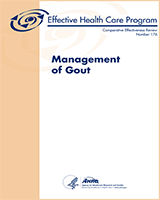- Figure A, Analytic framework for treatment of acute gout - Management of GoutFigure A, Analytic framework for treatment of acute gout - Management of Gout
- zinc finger BED domain-containing protein 1-like [Gadus morhua]zinc finger BED domain-containing protein 1-like [Gadus morhua]gi|1721923954|ref|XP_030220401.1|Protein
- syndecan-2-like [Gadus morhua]syndecan-2-like [Gadus morhua]gi|1721989610|ref|XP_030203289.1|Protein
- zinc finger protein 35-like isoform X1 [Gadus morhua]zinc finger protein 35-like isoform X1 [Gadus morhua]gi|1721865757|ref|XP_030223442.1|Protein
- LOW QUALITY PROTEIN: zinc finger protein 608-like [Gadus morhua]LOW QUALITY PROTEIN: zinc finger protein 608-like [Gadus morhua]gi|1721945166|ref|XP_030227207.1|Protein
Your browsing activity is empty.
Activity recording is turned off.
See more...

